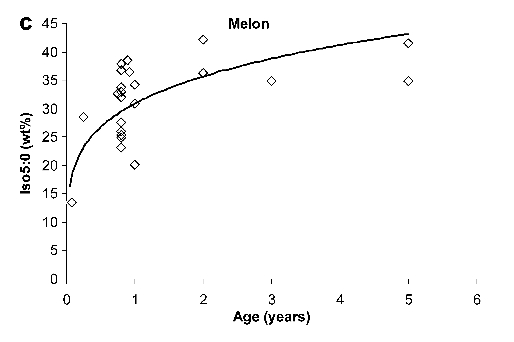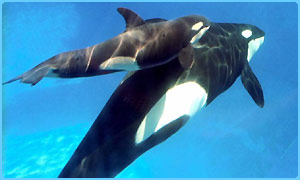Odontocete Echolocation
Biology 342 Fall 06
a Leonarppenheim Production
Ontogeny
Not much is known about the development of the melon in toothed whales. It must be hard to get grants to fund studies that would require cutting up Flipper. There have been some studies however, that have shown that toothed whales hear differently during various stages of development. A study of Risso’s dolphins and bottlenose dolphins (Nachtigall, 2005) show that infants have a higher range of hearing than adults, especially in higher frequencies. This indicates that, like many other mammals, dolphins lose their high-frequency hearing as they age. Another study concentrated on isovaleric acid accumulation in the melon. Isovaleric acid is an unusually dense fatty acid that is important for echolocation and auditory sensation in the various acoustic tissues. The study showed that isovaleric acid increased with age and reached an asymptote at about 3-4 years (Koopman, 2003).
Figure: Melon composition in whales of varying ages (Koopman, 2003).
Although few studies have been done that answer any ontological questions about the melon or echolocation, the two studies mentioned here open new doors for research. Further research can be conducted to answer questions about the hearing of other toothed whale species. Audiograms that record the range of an individual's hearing could be collected from captive toothed whales. More data could be collected on the composition of the melon in different ages of whales by using whales that have died from beaching or by-catch.
